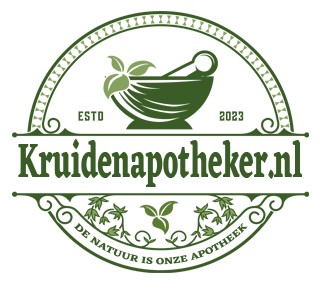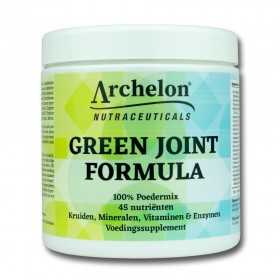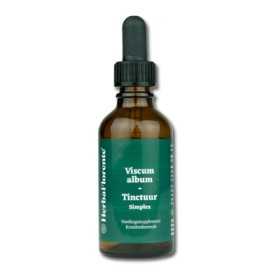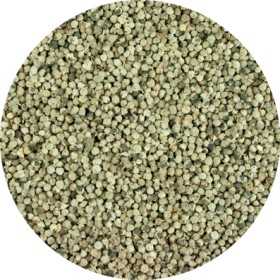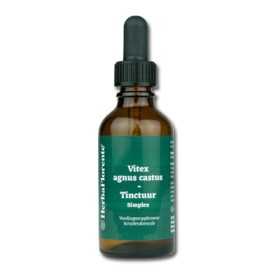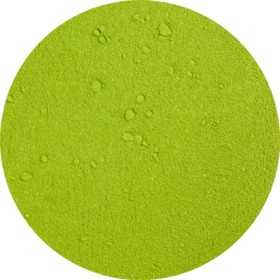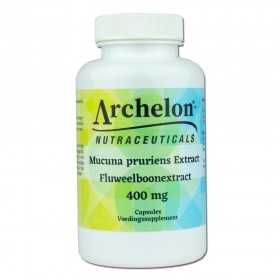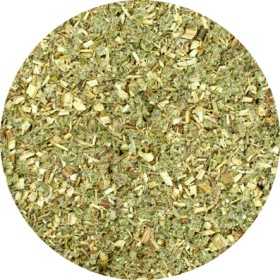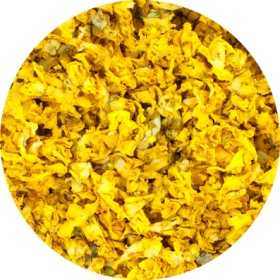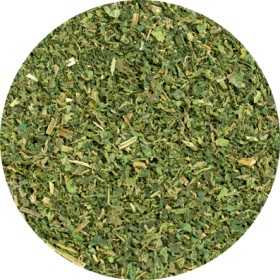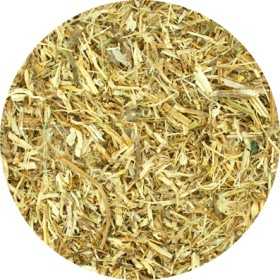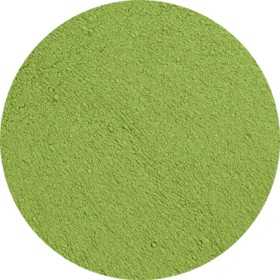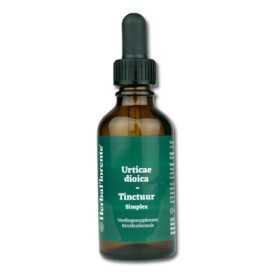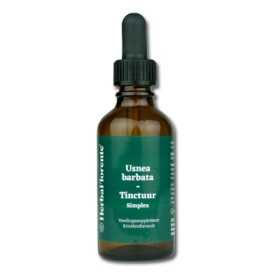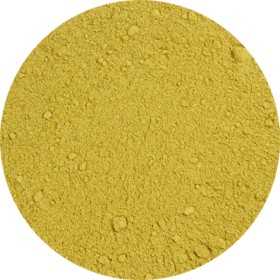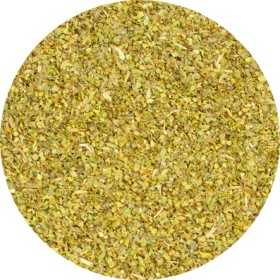Home
There are 410 products.
Milk Thistle Tincture - Sylibum marianum (Cardui Mariae) Tincture
Single herbal tincture made with dried seed of Sylibum marianum (Cardui Mariae) (Milk thistle).
Milk thistle (Silybum marianum), also known as milk thistle or milk thistle, is a spiny plant native to the Mediterranean region, but which also grows in our area. It belongs to the composite family. Milk thistle has been used for centuries as a natural remedy to support liver and bile function. It can be used as part of a cleansing regimen to assist the liver in the detoxification process.
The seeds of milk thistle contain silymarin, a powerful antioxidant. Silymarin stimulates the liver in the natural detoxification process and thus supports liver function.
Milk thistle (Silybum marianum), also known as milk thistle or milk thistle, is a spiny plant native to the Mediterranean region, but which also grows in our area. It belongs to the composite family. Milk thistle has been used for centuries as a natural remedy to support liver and bile function. It can be used as part of a cleansing regimen to assist the liver in the detoxification process.
The seeds of milk thistle contain silymarin, a powerful antioxidant. Silymarin stimulates the liver in the natural detoxification process and thus supports liver function.
€9.95
Mistletoe - Viscum alba
Mistletoe (Viscum album) is an evergreen plant belonging to the sandalwood family, known by various names such as mistletoe, mistletoe, or birdlime. Mistletoe naturally occurs in Europe, Northwest Africa, West and Central Asia. It is a semi-parasite that thrives in the wild on numerous host species.
Over the centuries, mistletoe has become intertwined with numerous legends and symbolic meanings. To the Druids, the mistletoe of an oak tree was sacred and associated with ushering in the new year, symbolic of fertility and good luck. In Norse mythology, mistletoe symbolizes peace and love, with people who meet under it kissing each other as a sign of this peace and love.
Over the centuries, mistletoe has become intertwined with numerous legends and symbolic meanings. To the Druids, the mistletoe of an oak tree was sacred and associated with ushering in the new year, symbolic of fertility and good luck. In Norse mythology, mistletoe symbolizes peace and love, with people who meet under it kissing each other as a sign of this peace and love.
€2.00
From: €2.00
Mistletoe Tincture - Viscum album Tincture
Single herbal tincture made with dried herb of Viscum album (Mistletoe).
Mistletoe (Viscum album) is an evergreen plant belonging to the sandalwood family, known by various names such as mistletoe, mistletoe, or birdlime. Mistletoe naturally occurs in Europe, Northwest Africa, West and Central Asia. It is a semi-parasite that thrives in the wild on numerous host species.
Mistletoe (Viscum album) is an evergreen plant belonging to the sandalwood family, known by various names such as mistletoe, mistletoe, or birdlime. Mistletoe naturally occurs in Europe, Northwest Africa, West and Central Asia. It is a semi-parasite that thrives in the wild on numerous host species.
€9.95
Monk's Pepper - Vitex agnus castus
Monk's pepper (Vitex agnus castus L.) grows naturally in countries around the Mediterranean. It is known as monk's pepper or chaste tree berries and is prized as a spice in this region.
Monks who had taken a vow of chastity once used this herb to suppress their physical desires, due to its supposed dampening effect on libido. This explains the Dutch name monk's pepper.
Nowadays, Vitex agnus is especially popular among women who want to support their hormonal system around menstruation or menopause. It can relieve discomfort during menstruation and also helps with menopausal symptoms such as hot flashes, mood swings and irritability. Moreover, vitex agnus contributes to a good mental balance.
Monks who had taken a vow of chastity once used this herb to suppress their physical desires, due to its supposed dampening effect on libido. This explains the Dutch name monk's pepper.
Nowadays, Vitex agnus is especially popular among women who want to support their hormonal system around menstruation or menopause. It can relieve discomfort during menstruation and also helps with menopausal symptoms such as hot flashes, mood swings and irritability. Moreover, vitex agnus contributes to a good mental balance.
€2.00
From: €2.00
Monk's Pepper Tincture - Vitex agnus castus Tincture
Monk's pepper (Vitex agnus castus L.) grows naturally in countries around the Mediterranean. It is known as monk's pepper or chaste tree berries and is prized as a spice in this region.
Monks who had taken a vow of chastity once used this herb to suppress their physical desires, due to its supposed dampening effect on libido. This explains the Dutch name monk's pepper.
Nowadays, Vitex agnus is especially popular among women who want to support their hormonal system around menstruation or menopause. It can relieve discomfort during menstruation and also helps with menopausal symptoms such as hot flashes, mood swings and irritability. Moreover, vitex agnus contributes to a good mental balance.
Monks who had taken a vow of chastity once used this herb to suppress their physical desires, due to its supposed dampening effect on libido. This explains the Dutch name monk's pepper.
Nowadays, Vitex agnus is especially popular among women who want to support their hormonal system around menstruation or menopause. It can relieve discomfort during menstruation and also helps with menopausal symptoms such as hot flashes, mood swings and irritability. Moreover, vitex agnus contributes to a good mental balance.
€9.95
Moringa oleifera - 300 mg
Moringa oleifera, also known as the 'tree of life', thrives in Africa and Asia and is known for its rich nutritional value. The tree is a treasure trove of more than dozens of nutrients, including no fewer than 47 antioxidants. Containing minerals, proteins, vitamins, beta-carotene, amino acids and various phenols in abundance, the leaves of the moringa are the true storehouse of nutritional value.
For centuries, Asian and African cultures have recognized the benefits of moringa oleifera. The tree has become an integral part of their daily diet due to its versatile uses and nutritional value. Because of its abundant benefits, moringa oleifera is often affectionately referred to as "the tree of life."
For centuries, Asian and African cultures have recognized the benefits of moringa oleifera. The tree has become an integral part of their daily diet due to its versatile uses and nutritional value. Because of its abundant benefits, moringa oleifera is often affectionately referred to as "the tree of life."
€19.95
Moringa Tree - Moringa oleifera (Leaf Grounded)
Moringa oleifera, also known as the 'tree of life', thrives in Africa and Asia and is known for its rich nutritional value. The tree is a treasure trove of more than dozens of nutrients, including no fewer than 47 antioxidants. Containing minerals, proteins, vitamins, beta-carotene, amino acids and various phenols in abundance, the leaves of the moringa are the true storehouse of nutritional value.
For centuries, Asian and African cultures have recognized the benefits of moringa oleifera. The tree has become an integral part of their daily diet due to its versatile uses and nutritional value. Because of its abundant benefits, moringa oleifera is often affectionately referred to as "the tree of life."
For centuries, Asian and African cultures have recognized the benefits of moringa oleifera. The tree has become an integral part of their daily diet due to its versatile uses and nutritional value. Because of its abundant benefits, moringa oleifera is often affectionately referred to as "the tree of life."
€3.20
From: €3.20
Moringa Tree - Moringa oleifera - (Leaf Cut)
Moringa oleifera, also known as the 'tree of life', thrives in Africa and Asia and is known for its rich nutritional value. The tree is a treasure trove of over dozens of nutrients, including as many as 47 antioxidants. With minerals, proteins, vitamins, beta-carotene, amino acids and various phenols in abundance, the leaves of the moringa are the true storehouse of nutritional value.
For centuries, Asian and African cultures have recognized the benefits of moringa oleifera. The tree has become an integral part of their daily diets due to its versatile uses and nutritional value. Due to its abundant benefits, moringa oleifera is often affectionately called 'the tree of life'.
For centuries, Asian and African cultures have recognized the benefits of moringa oleifera. The tree has become an integral part of their daily diets due to its versatile uses and nutritional value. Due to its abundant benefits, moringa oleifera is often affectionately called 'the tree of life'.
€2.95
From: €2.95
MSM (Methylsulfonylmethane) - 550mg
MSM, full name methylsulfonylmethane, is an odorless, white crystalline powder that is soluble in water and is an important nutrient. It is an organic compound of sulfur that occurs both in our food and in our bodies. This compound, which naturally contains sulfur, plays an essential role in various body processes and is involved in the formation of more than 150 different substances.
The special thing about MSM is that it is a very easily absorbable form of sulfur. This compound contributes to the flexibility of the connections between cells, especially in tissues that naturally contain a lot of sulfur. Therefore, MSM can be beneficial for the hair, nails, joints, tendons, cartilage and ligaments.
The special thing about MSM is that it is a very easily absorbable form of sulfur. This compound contributes to the flexibility of the connections between cells, especially in tissues that naturally contain a lot of sulfur. Therefore, MSM can be beneficial for the hair, nails, joints, tendons, cartilage and ligaments.
€23.95
Mucuna pruriens Extract - Velvet Bean Extract - 400 mg
Mucuna pruriens, also known as the velvet bean, has been an essential part of traditional Ayurvedic medicine in India for thousands of years. This special plant not only supports the nervous system and helps maintain emotional balance, but is also a natural aid for both men and women for libido. In addition, Mucuna pruriens contributes to a healthy menstrual cycle and supports normal testosterone levels. With its powerful antioxidants, it also strengthens the immune system.
The Mucuna pruriens capsules are completely plant-based and therefore suitable for vegetarians and vegans. Discover the ancient Ayurvedic secrets and experience the powerful benefits of this unique bean for yourself!
The Mucuna pruriens capsules are completely plant-based and therefore suitable for vegetarians and vegans. Discover the ancient Ayurvedic secrets and experience the powerful benefits of this unique bean for yourself!
€29.95
Mugwort - Artemisiae vulgaris - Cut
The mugwort (Artemisia vulgaris) is a plant from the composite family (Asteraceae), related to wormwood. This weakly aromatic plant has leaves that have white felt-like hairs on the underside. Mugwort is widespread in Belgium and the Netherlands, often found on wasteland and along roads. The plant thrives best in sandy soil. The stem is 60–120 cm long and often shows a reddish color.
In ancient times, the Romans put mugwort in their footwear to relieve fatigue and pain. In central Mongolia, where the population used to suffer from clouds of large mosquitoes (the size of small shrimps), the Mongolian mugwort (with its characteristic bluish, hairy, succulent leaves) was used to repel these mosquitoes in the damp lawns.
In ancient times, the Romans put mugwort in their footwear to relieve fatigue and pain. In central Mongolia, where the population used to suffer from clouds of large mosquitoes (the size of small shrimps), the Mongolian mugwort (with its characteristic bluish, hairy, succulent leaves) was used to repel these mosquitoes in the damp lawns.
€2.00
From: €2.00
Mullein - Verbascum thapsus
The mullein (Verbascum thapsus) is a member of the marram family (Scrophulariaceae) and mainly thrives in dune and chalk areas, where it is quite common. This plant is rare to find elsewhere in the Netherlands.
The flowers of the mullein are yellow and have a diameter of 1.5–3 cm. They consist of five connate petals, five sepals and five stamens, three of which are covered with yellow or white hairs. The flowers grow in dense spikes and bloom from July to autumn. An adult plant can reach a height of more than two meters.
The flowers of the mullein are yellow and have a diameter of 1.5–3 cm. They consist of five connate petals, five sepals and five stamens, three of which are covered with yellow or white hairs. The flowers grow in dense spikes and bloom from July to autumn. An adult plant can reach a height of more than two meters.
€5.00
From: €5.00
NAC (N-Acetyl-L-Cysteine) - 500 mg
N-acetyl-cysteine (NAC) is a form of the sulfur-containing semi-essential amino acid L-cysteine. It is found in dairy, meat, fruit and vegetables, but this is often insufficient and can best be supplemented through supplementation. The advantage that N-acetyl-cysteine has over cysteine is that it is better and more easily absorbed by our body. Furthermore, N-acetyl-cysteine supports production of the important tripeptide glutathione in our body. Glutathione plays a role in protecting our cells against oxidative stress.
€24.95
Nettle (Herb) - Urticae dioica
The nettle (Urtica dioica) is a powerful and versatile plant that occurs in many places, despite its irritating property to the touch. Known for its culinary uses, such as nettle soup and tea, the nettle is also known for its health benefits.
Nettle leaf is a traditional herbal medicine with various applications. It contributes to healthy skin, gives shine to the hair and strengthens the nails. In addition, it can help soothe the respiratory tract and maintain proper fluid balance. It also provides support to the heart and blood vessels.
Nettle leaf is a traditional herbal medicine with various applications. It contributes to healthy skin, gives shine to the hair and strengthens the nails. In addition, it can help soothe the respiratory tract and maintain proper fluid balance. It also provides support to the heart and blood vessels.
€2.00
From: €2.00
Nettle (Root) - Urticae dioica
Nettle (Urtica dioica) is a powerful and versatile plant that can be used in many ways. Although the plant stings when touched, it is best known for its valuable properties. Nettle is not only loved in the kitchen (think of nettle soup or tea), but also because of its many benefits for humans.
This wild plant, native to Africa and Asia and known by the Latin name Urtica dioica, has been used for centuries. In herbal medicine, not only the dried leaves, but also the dried roots are valued. Nettle root is used to support good prostate function.
This wild plant, native to Africa and Asia and known by the Latin name Urtica dioica, has been used for centuries. In herbal medicine, not only the dried leaves, but also the dried roots are valued. Nettle root is used to support good prostate function.
€2.20
From: €2.20
Nettle - 380 mg
The nettle (Urtica dioica) is a powerful and versatile plant that occurs in many places, despite its irritating property to the touch. Known for its culinary uses, such as nettle soup and tea, the nettle is also known for its health benefits.
Originally from Africa and Asia, the plant goes by the Latin name Urtica dioica and has been used for centuries. In herbalism, not only the dried leaves, but also the dried roots are used.
Nettle leaf is a traditional herbal medicine with various applications. It contributes to healthy skin, gives shine to the hair and strengthens the nails. In addition, it can help soothe the respiratory tract and maintain proper fluid balance. It also provides support to the heart and blood vessels.
Originally from Africa and Asia, the plant goes by the Latin name Urtica dioica and has been used for centuries. In herbalism, not only the dried leaves, but also the dried roots are used.
Nettle leaf is a traditional herbal medicine with various applications. It contributes to healthy skin, gives shine to the hair and strengthens the nails. In addition, it can help soothe the respiratory tract and maintain proper fluid balance. It also provides support to the heart and blood vessels.
€17.95
Nettle - Urticae dioica
The nettle (Urtica dioica) is a powerful and versatile plant that occurs in many places, despite its irritating property to the touch. Known for its culinary uses, such as nettle soup and tea, the nettle is also known for its health benefits.
Nettle leaf is a traditional herbal medicine with various applications. It contributes to healthy skin, gives shine to the hair and strengthens the nails. In addition, it can help soothe the respiratory tract and maintain proper fluid balance. It also provides support to the heart and blood vessels.
Nettle leaf is a traditional herbal medicine with various applications. It contributes to healthy skin, gives shine to the hair and strengthens the nails. In addition, it can help soothe the respiratory tract and maintain proper fluid balance. It also provides support to the heart and blood vessels.
€2.40
From: €2.40
Nettle Tincture - Urticae dioica Tincture
Single herbal tincture made with dried herb of Urticae dioica (Nettle).
The nettle (Urtica dioica) is a powerful and versatile plant that occurs in many places, despite its irritating property to the touch. Known for its culinary uses, such as nettle soup and tea, the nettle is also known for its health benefits.
Nettle leaf is a traditional herbal medicine with various applications. It contributes to healthy skin, gives shine to the hair and strengthens the nails. In addition, it can help soothe the respiratory tract and maintain proper fluid balance. It also provides support to the heart and blood vessels.
The nettle (Urtica dioica) is a powerful and versatile plant that occurs in many places, despite its irritating property to the touch. Known for its culinary uses, such as nettle soup and tea, the nettle is also known for its health benefits.
Nettle leaf is a traditional herbal medicine with various applications. It contributes to healthy skin, gives shine to the hair and strengthens the nails. In addition, it can help soothe the respiratory tract and maintain proper fluid balance. It also provides support to the heart and blood vessels.
€10.95
Old Man's Beard Tincture - Usnea barbata Tincture
Single herbal tincture made with dried herb of Usnea barbata (Old Man's Beard).
Usnea barbata, sometimes also called 'old man's beard', is a genus of lichens belonging to the ascomycetes. They are found in moist forests around the world, where they usually hang from tree branches. In rare cases they are also found on the bottom or on rocks. The genus belongs to the family of Parmeliaceae. Beard mosses are characterized by a shrub-like structure and a central axis from which branches arise. In areas free of air pollution they can grow 10 to 20 cm tall.
Usnea barbata, sometimes also called 'old man's beard', is a genus of lichens belonging to the ascomycetes. They are found in moist forests around the world, where they usually hang from tree branches. In rare cases they are also found on the bottom or on rocks. The genus belongs to the family of Parmeliaceae. Beard mosses are characterized by a shrub-like structure and a central axis from which branches arise. In areas free of air pollution they can grow 10 to 20 cm tall.
€9.95
Old Men's Beard - Usnea barbata
Usnea barbata, sometimes also called 'old man's beard', is a genus of lichens belonging to the ascomycetes. They are found in moist forests around the world, where they usually hang from tree branches. In rare cases they are also found on the bottom or on rocks. The genus belongs to the family of Parmeliaceae. Beard mosses are characterized by a shrub-like structure and a central axis from which branches arise. In areas free of air pollution they can grow 10 to 20 cm tall.
€5.50
From: €5.50
Olibanum Idian - Boswelia serrata
Olibanum Idian (Boswellia serrata) is a medium to large deciduous tree with a slightly open crown and branches that hang slightly. This tree belongs to the Burseraceae family and is native to India and the Punjab area.
Olibanum Idian is extracted from the resin of the tree. Extracts of Boswellia serrata have been clinically studied for osteoarthritis and joint pain, showing a slight improvement in pain and function. In traditional Ayurveda it is used for diabetes.
Boswellia serrata produces several forms of boswellic acids, such as β-boswellic acid, acetyl-β-boswellic acid, 11-keto-β-boswellic acid and acetyl-11-keto-β-boswellic acid.
Olibanum Idian is extracted from the resin of the tree. Extracts of Boswellia serrata have been clinically studied for osteoarthritis and joint pain, showing a slight improvement in pain and function. In traditional Ayurveda it is used for diabetes.
Boswellia serrata produces several forms of boswellic acids, such as β-boswellic acid, acetyl-β-boswellic acid, 11-keto-β-boswellic acid and acetyl-11-keto-β-boswellic acid.
€2.60
From: €2.60
Olive - Olea europaea
Olive leaves, from the wild olive tree (Olea europaea), are naturally rich in antioxidants. Originally native to western Asia, Egypt and Syria, these trees are now a distinctive sight throughout the Mediterranean region, as well as in regions such as South America, the southern United States, southern Australia and the tropics. Olive leaf tea has been consumed in the Mediterranean for centuries, and this is not surprising given the known antioxidant properties of olive leaves. It is therefore no coincidence that the olive tree is often referred to as the 'tree of life'.
€2.25
From: €2.25
Oregano - Origani cetici
Oregano also known as wild marjoram, is a special herb that has been used for thousands of years for its beneficial properties. It supports healthy intestinal flora and promotes digestion. In addition, oregano has benefits for the heart, blood vessels and blood pressure.
The herb belongs to the Lamiaceae family, which also includes rosemary, thyme and mint. Oreganois is particularly rich in carvacrol, which gives it its characteristic spicy and slightly bitter taste. The most vigorous form of oregano grows in Mediterranean mountain areas, thriving on calcareous soil. During the spring, wild oregano blooms and residents go into the mountains to collect these aromatic herbs.
The herb belongs to the Lamiaceae family, which also includes rosemary, thyme and mint. Oreganois is particularly rich in carvacrol, which gives it its characteristic spicy and slightly bitter taste. The most vigorous form of oregano grows in Mediterranean mountain areas, thriving on calcareous soil. During the spring, wild oregano blooms and residents go into the mountains to collect these aromatic herbs.
€3.00
From: €3.00
Oregano - Origani vulgaris
Oregano (Origanum vulgare) also known as wild marjoram, is a special herb that has been used for thousands of years for its beneficial properties. It supports healthy intestinal flora and promotes digestion. In addition, oregano has benefits for the heart, blood vessels and blood pressure.
The herb belongs to the Lamiaceae family, which also includes rosemary, thyme and mint. Oreganois is particularly rich in carvacrol, which gives it its characteristic spicy and slightly bitter taste. The most vigorous form of oregano grows in Mediterranean mountain areas, thriving on calcareous soil. During the spring, wild oregano blooms and residents go into the mountains to collect these aromatic herbs.
The herb belongs to the Lamiaceae family, which also includes rosemary, thyme and mint. Oreganois is particularly rich in carvacrol, which gives it its characteristic spicy and slightly bitter taste. The most vigorous form of oregano grows in Mediterranean mountain areas, thriving on calcareous soil. During the spring, wild oregano blooms and residents go into the mountains to collect these aromatic herbs.
€2.80
From: €2.80
